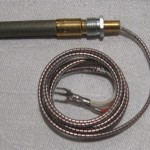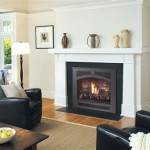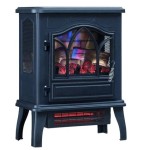Backyard Stone Fireplace: A Comprehensive Guide
A backyard stone fireplace provides a compelling focal point for outdoor living spaces, offering warmth, ambiance, and a gathering place for social activities. Constructing such a feature requires careful planning, appropriate material selection, and adherence to local building codes. This article provides a detailed overview of various aspects related to backyard stone fireplaces, encompassing design considerations, construction techniques, and maintenance practices.
Design and Planning Considerations
Before initiating the construction of a backyard stone fireplace, thorough planning is paramount. Considerations include the desired size and style, the intended use, the available space, and the overall aesthetic of the backyard. The design should complement the existing landscape and architectural features of the property. Furthermore, adherence to local building codes and safety regulations is crucial at this stage.
The size of the fireplace should be proportionate to the size of the backyard. A large fireplace in a small backyard can appear overwhelming, while a small fireplace in a large backyard may lack visual impact. Consider the number of people who will typically use the fireplace and the type of activities that will take place around it. For example, if the fireplace is primarily intended for cooking, the design should incorporate features such as a grill or a cooking surface.
The style of the fireplace should be consistent with the overall aesthetic of the backyard. Options range from rustic and natural to modern and sleek. Rustic fireplaces often feature rough-cut stones and irregular shapes, while modern fireplaces tend to have clean lines and smooth surfaces. The choice of stone should also align with the style. Natural stone, such as fieldstone or river rock, lends itself well to rustic designs, while manufactured stone veneer can create a more contemporary look.
Spacing and clearances are vital considerations when planning the location of the fireplace. Ensure adequate space around the fireplace for seating and movement. Maintain a safe distance between the fireplace and any flammable materials, such as fences, trees, or sheds. Consult local building codes for specific requirements related to clearances from property lines and structures. Often, a permit will be needed to ensure compliance with these codes.
Ventilation is another crucial aspect of fireplace design. A well-designed chimney is essential for proper draft and efficient smoke removal. The height and diameter of the chimney should be appropriate for the size of the firebox. Inadequate ventilation can result in smoke billowing back into the backyard, creating an unpleasant and potentially hazardous environment. Professional consultation from a licensed contractor or chimney specialist is recommended to ensure proper ventilation design.
Construction Techniques and Material Selection
The construction of a backyard stone fireplace involves several stages, including foundation preparation, firebox construction, chimney building, and stone cladding. Each stage requires specialized tools, techniques, and materials. It is crucial to follow established construction practices to ensure the structural integrity and safety of the fireplace.
The foundation provides a stable base for the fireplace and prevents settling or cracking. The foundation should be deep enough to extend below the frost line in the area. This depth varies depending on the climate. A concrete footing is typically used as the foundation, and it should be properly reinforced with steel rebar. The size of the footing should be adequate to support the weight of the fireplace.
The firebox is the chamber where the fire is built. It should be constructed of fire-resistant materials, such as firebrick or refractory concrete. Firebrick is a type of clay brick that is specifically designed to withstand high temperatures. Refractory concrete is a concrete mix that contains specialized aggregates that resist heat damage. The firebox should be properly insulated to prevent heat transfer to the surrounding structure.
The chimney is responsible for venting smoke and combustion gases away from the fireplace. It should be constructed of durable, non-combustible materials, such as brick, stone, or metal. The chimney should extend high enough above the roofline to ensure proper draft and prevent downdrafts. The interior of the chimney should be lined with a flue liner, which protects the chimney structure from the corrosive effects of combustion gases.
Stone cladding is the process of applying stone to the exterior of the fireplace. This can be done using natural stone or manufactured stone veneer. Natural stone offers a unique and authentic look, but it can be more expensive and difficult to install than manufactured stone veneer. Manufactured stone veneer is a lightweight and cost-effective alternative to natural stone. It is available in a wide range of colors, textures, and styles.
Mortar is used to bind the stones together and create a watertight seal. The type of mortar used should be appropriate for the type of stone. Type S mortar is a strong and durable mortar that is suitable for most stone applications. The mortar joints should be properly filled and tooled to prevent water penetration. Proper drainage should also be considered to prevent water from accumulating around the base of the fireplace.
Maintenance and Safety Practices
Regular maintenance is essential to ensure the longevity and safety of a backyard stone fireplace. This includes cleaning the firebox, inspecting the chimney, and addressing any signs of damage or deterioration. Adherence to safety practices is paramount when using the fireplace.
The firebox should be cleaned regularly to remove ashes and creosote buildup. Ashes can accumulate over time and reduce the efficiency of the fireplace. Creosote is a flammable substance that can build up in the chimney and increase the risk of a chimney fire. The firebox should be cleaned with a shovel and brush. A chimney sweep can be hired to professionally clean the chimney and remove creosote buildup.
The chimney should be inspected regularly for cracks, spalling, or other signs of damage. Cracks in the chimney can allow water to penetrate the structure and cause further damage. Spalling is the process of the surface of the brick or stone flaking off. These issues should be addressed promptly to prevent more serious problems. A chimney repair specialist can assess the damage and recommend appropriate repairs.
Safety practices are essential when using a backyard stone fireplace. Never leave a fire unattended. Keep flammable materials away from the fireplace. Use a fire screen to prevent sparks from escaping and potentially igniting nearby materials. Ensure that the fire is completely extinguished before leaving the area. Have a fire extinguisher or garden hose readily available in case of emergency.
Burning only seasoned wood is crucial for efficient and safe fireplace operation. Seasoned wood has a lower moisture content than green wood, which means it burns more cleanly and produces less smoke and creosote. Avoid burning treated wood, painted wood, or other materials that can release harmful chemicals into the air. Store firewood in a dry location away from the fireplace.
Consider the local weather conditions when using the fireplace. Avoid using the fireplace during windy conditions, as this can increase the risk of sparks escaping and potentially starting a fire. Be mindful of dry conditions, as even a small spark can ignite dry vegetation. Always check local fire restrictions before using the fireplace, particularly during periods of high fire danger.

Warm Up To Outdoor Living Fireplaces And Heaters Can Make The Great Outdoors Even Greater Stone Fireplace Patio Backyard

Outdoor Fireplaces Pavers By Ideal

Outdoor Fireplace Kits Stonewood S Cape Cod Ma Nh Ct

Pull Up A Chair And Light The Night 15 Natural Stone Fireplaces Fire Pits Swenson Granite 100 Stones

How To Build An Outdoor Stacked Stone Fireplace

Outdoor Fireplaces Pavers By Ideal

Outdoor Fireplace Trends Environmental Designs

Using An Outdoor Stone Fireplace Dutchies Stoneworks Gap Pa

Pull Up A Chair And Light The Night 15 Natural Stone Fireplaces Fire Pits Swenson Granite 100 Stones

How To Install Firebrick In Your Outdoor Stone Fireplace
Related Posts








